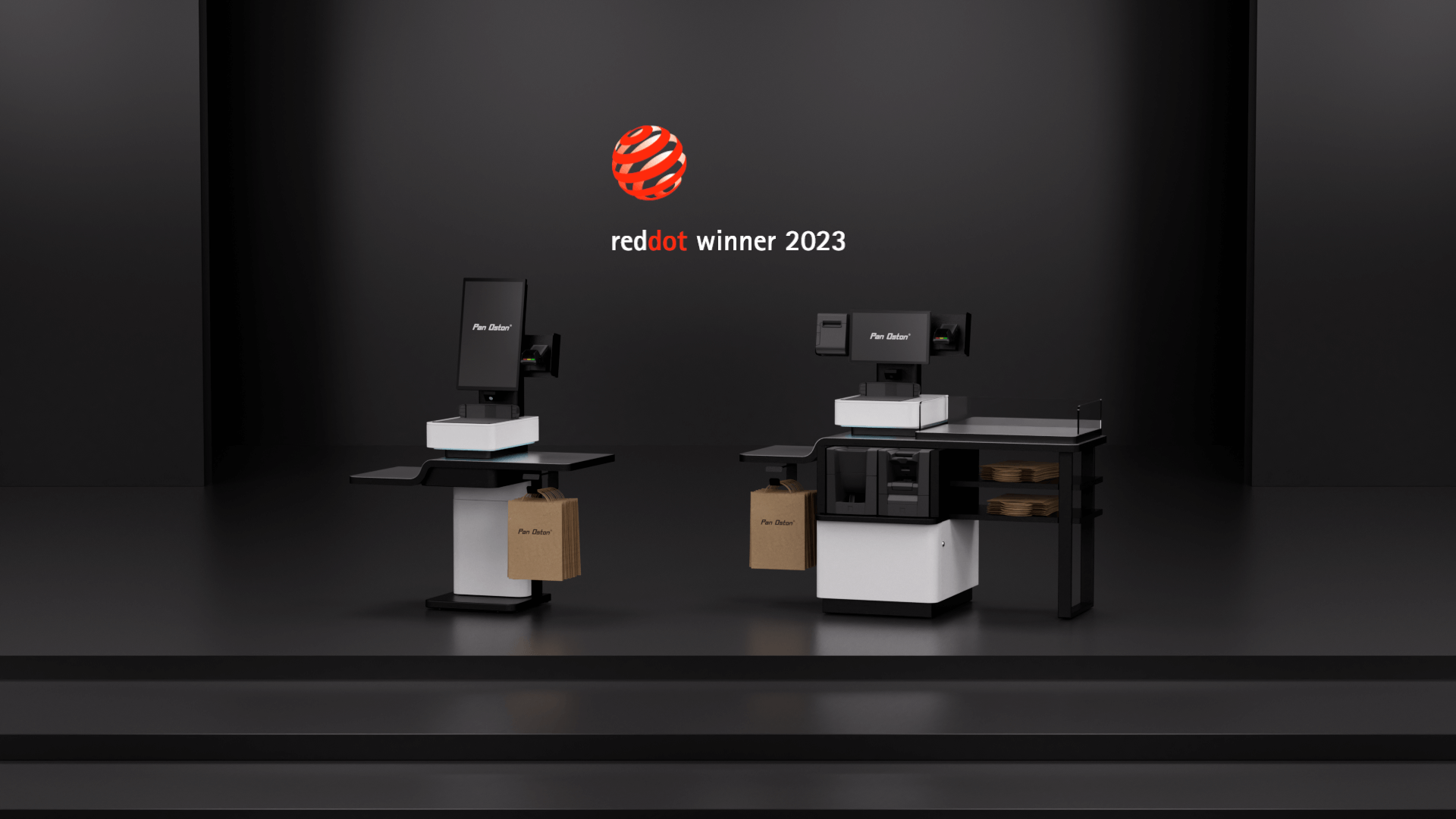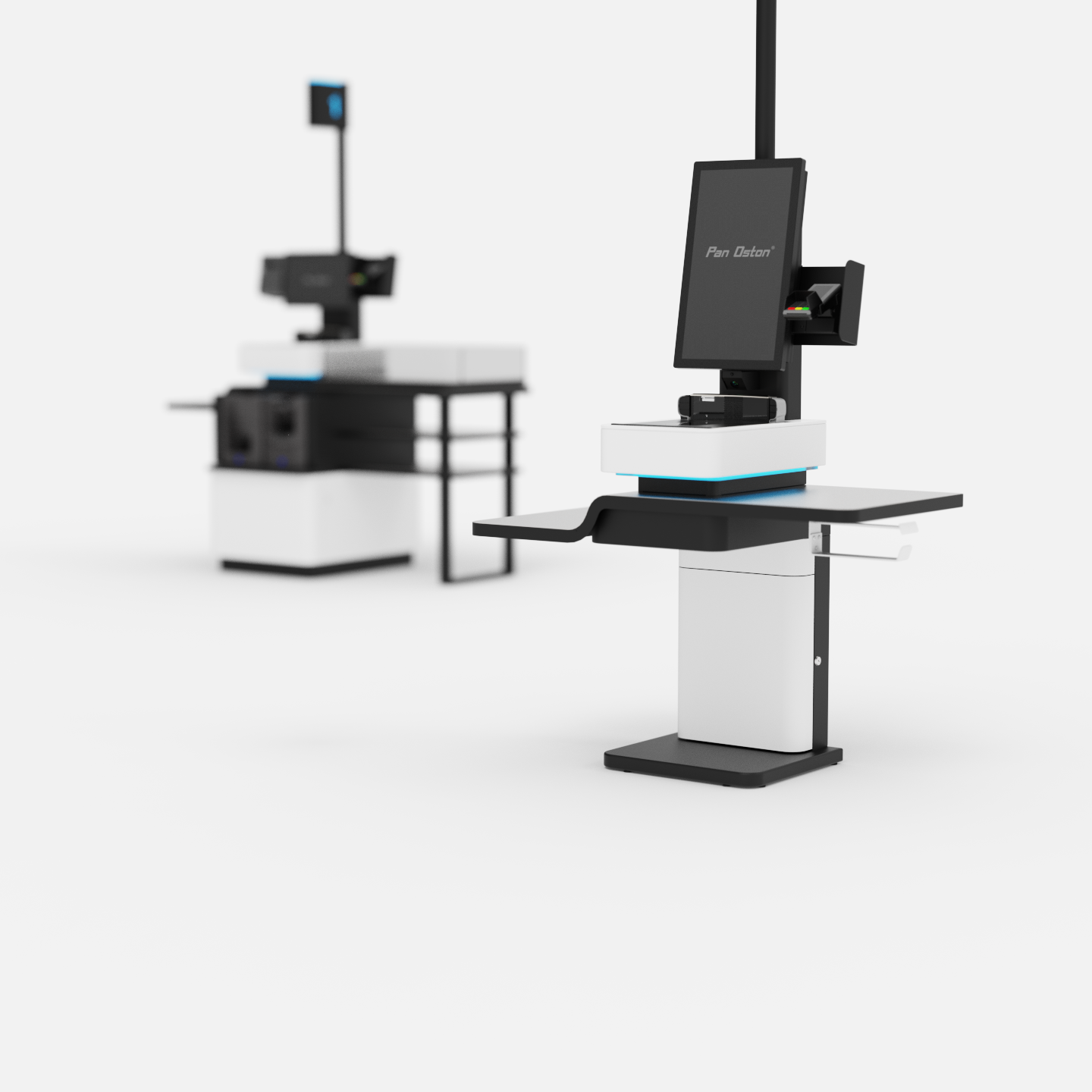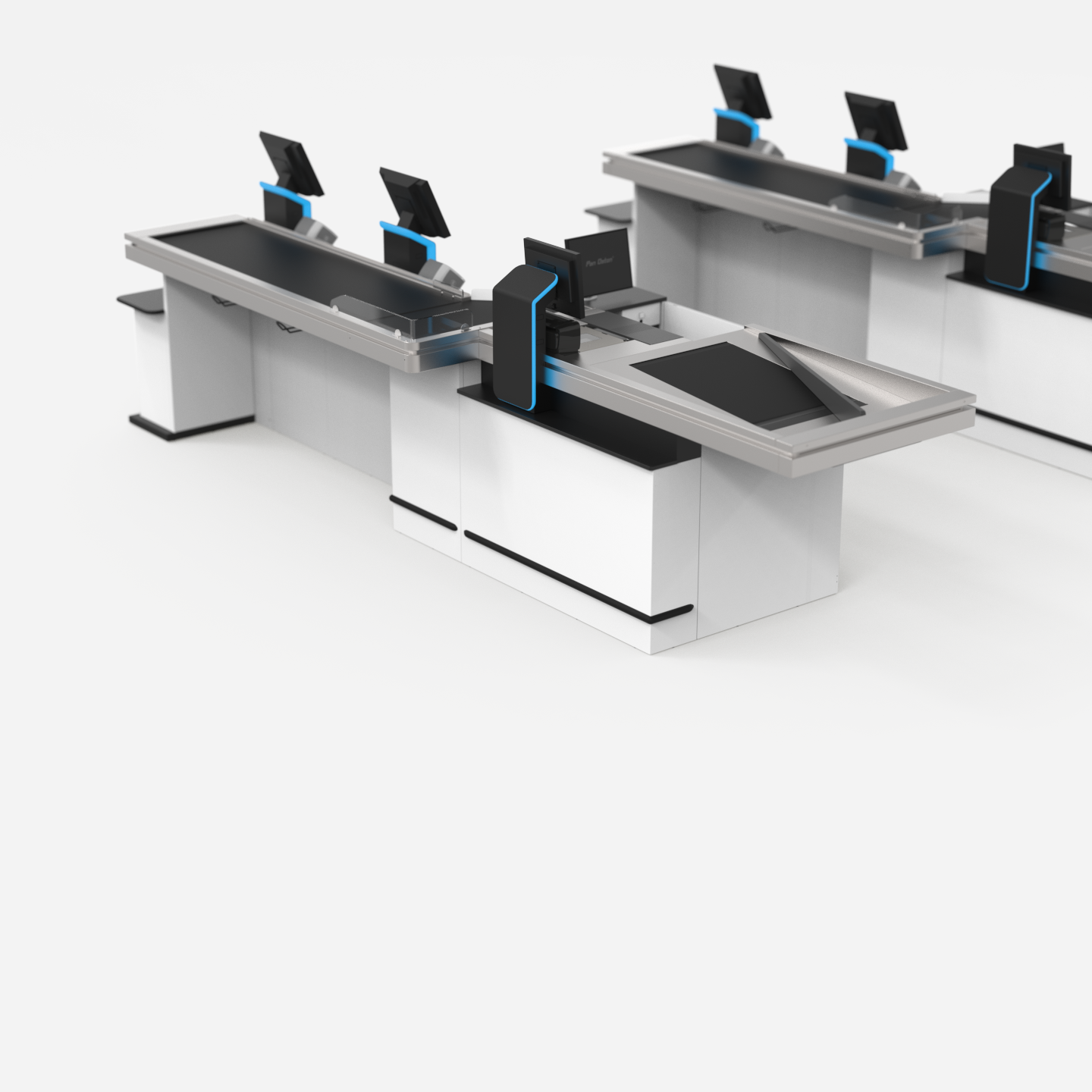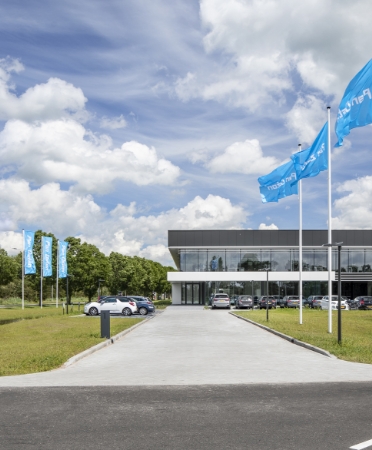THE FIVE DESIGN PRINCIPLES BEHIND EFFECTIVE SELF-CHECKOUT (SCO) SOLUTIONS
The adoption of self-checkout (SCOs) among retailers continues at pace; it has moved from novelty to necessity. Once considered a tool of convenience, SCO is now a vital component of modern Custom retail solutions, transforming how stores operate, how customers shop, and how businesses prepare for the future.
Retailers are pressured to meet rising customer expectations for speed, autonomy, and digital integration. Simultaneously, they face challenges such as increasing labour costs, limited store space, and heightened security concerns. As a result, decision-makers must rethink how checkout areas are designed, implemented, and optimised.
While the benefits of SCO technology are well known—enhanced efficiency, shorter queues, and reduced staffing requirements—the true success of any implementation lies in its design. And that doesn’t just mean visual design, but also how these systems function, integrate, and scale in a real-world retail setting.
This comprehensive guide outlines the five essential design principles behind successful self-checkout solutions. These principles are crucial for those making strategic retail decisions.
WHY DESIGN IS CRUCIAL FOR SELF-CHECKOUT
Many retailers mistakenly focus solely on the functionality of SCO hardware. But self-checkout systems are more than just machines; they are customer touchpoints, data collection hubs, and physical expressions of your brand strategy. With the right design, SCO technology becomes a key driver of operational excellence and customer satisfaction.
Effective design influences:
- Customer adoption and ease of use
- Ergonomics and inclusivity
- Hardware integration
- Future flexibility and upgrades
- Brand identity and consistency
Let’s explore the five key design principles that can elevate SCO performance across your retail business.
 (Groot).jpg)
1. FRICTIONLESS USER EXPERIENCE
A truly great Self-checkout experience should feel effortless. Customers should move through the process without confusion or hesitation. Each point of friction increases the risk of errors, delays, and customer frustration. By creating a frictionless SCO experience, Retailers can boost customer satisfaction, prevent queues from forming, and increase throughput. Retailers investing in custom retail solutions must prioritise the user experience to enhance both efficiency and engagement. This is best done by taking a customer-centred design approach.
Key elements of a seamless user experience:
Clear, intuitive interfaces
Simple screen layouts and logical steps reduce the learning curve. Users often interact with systems under time pressure or in unfamiliar environments. A clear and intuitive interface minimises cognitive load and frustration. By understanding user behaviour and mental models, designers can create layouts that feel natural. Logical navigation, minimal steps, and visual hierarchy help users complete tasks quickly and confidently.
Multi-language support
Designing SCOs with empathy for linguistic diversity ensures inclusivity. Offering language options at the start of an interaction shows respect for the user and removes a major barrier to access. This is especially essential in multicultural areas and tourist hotspots.
Standardised processes
Using a customer-centric design approach for Self-checkouts ensures that once a process is optimised for user needs, it is replicated across all touchpoints. This creates a seamless and predictable experience. Consistency across locations builds user trust and reduces the learning curve. Users can rely on familiar steps, even in new environments.
Visual and auditory guidance
Not all users process information the same way. Some may have visual impairments, others may be unfamiliar with the interface. Providing multimodal feedback (visual cues, sounds, spoken instructions) ensures accessibility and reduces dependency on staff assistance.
2. ERGONOMIC AND INCLUSIVE DESIGN
Today’s retailers serve an increasingly diverse customer base. Inclusive design ensures that all shoppers, including those with disabilities, the elderly, or parents with prams, can confidently and independently use self-checkout systems.
This is why ergonomics plays a critical role when it comes to designing the right self-checkout. By ensuring that physical and digital interactions are comfortable, accessible, and inclusive for all users—regardless of their physical abilities, stature, or mobility. Let’s explore how various design features enhance ergonomics, inclusivity and the overall user experience of a SCO.
Design Features to Consider:
Adjustable screens and touchpoints
People vary in height, reach, and mobility. Fixed interfaces can exclude children, wheelchair users, or very tall individuals. Your design should accommodate users of different heights and abilities. This can be done by creating a tailored solution or by adding adjustable or tiltable screens and repositionable touchpoints.
Accessible layouts
Tight or cluttered spaces can be difficult to navigate for users with wheelchairs, walkers, or strollers. Spatial design of the checkout area considers turning radii, clear floor space, and unobstructed paths. By creating enough space to carry or manoeuvre items like shopping baskets, customers will have an easier time using the self-checkout.
.
Height and reach considerations
All physical interactions with a self-checkout must be looked at from an ergonomic standpoint. Height and reach considerations should be made not only for touchscreens and other interaction touchpoints such as scanners, printers, and payment terminals, but also for packing platforms and bag hooks.
Enhanced accessibility features
Accessibility for people with visual impairments can be enhanced by using high-contrast displays, adding audio navigation and text-to-speech functions, and including touchscreen operation via physical buttons.
An inclusive SCO solution not only meets legal accessibility standards but also widens your customer appeal. It reinforces your brand’s commitment to service and improves overall customer satisfaction, while reducing the need for staff intervention.
.jpg)
3. MODULARITY AND SCALABILITY
Retailers need flexible, future-proof solutions that work across a variety of store formats. Whether it’s a small convenience store, a busy urban supermarket, or a large hypermarket, modular self-checkout systems allow for tailor-made configurations.
What Modular Design Looks Like:
Swappable modules
Retailers can easily interchange hardware components like barcode scanners, receipt printers and payment terminals from different hardware providers, allowing for the introduction of new technology or accommodating new payment methods like contactless or mobile wallets.
Customisable footprints
Retailers can fit unique store layouts without compromising functionality. Modular self-checkouts can be tailored to fit different store configurations, maximising the use of the available floor space and optimising customer flow.
Expandable systems
Modular designs are easy to scale up by adding SCO-units to the checkout area, upgrading components or changing configurations by adding packing platforms or intakes for handheld scanners.
Quick installation
Modular systems are designed for fast deployment, with pre-configured components and minimal on-site assembly. This ensures minimal downtime and more efficient store installations.
Modularity reduces the total cost of ownership and ensures rapid adaptation to market trends, new technologies, or seasonal fluctuations. A modular SCO unit becomes a building block of a broader, scalable custom retail solution.
 (Groot).jpg)
4. SEAMLESS HARDWARE INTEGRATION
Design is the cornerstone of successful retail technology integration, especially when transitioning from legacy systems to future-proof solutions. It ensures that new hardware, such as printers, scanners, PCs, POS systems, touchscreens, LED signage, and cash management systems, works cohesively and intuitively within the retail environment. Good design bridges the gap between old and new by focusing on user experience, accessibility, and operational efficiency. It enables ergonomic layouts, intuitive interfaces, and modular systems that are easy to upgrade and scale. Whether it’s positioning touchscreens for optimal reach or integrating LED signage that enhances customer engagement, design ensures that technology enhances rather than hinders.
Integration Priorities include:
Integration with legacy hardware
Many retail environments are significantly invested in existing hardware systems. Ensuring compatibility reduces costs, minimises disruption during upgrades, and allows for a smoother transition to newer technologies without needing to replace the entire infrastructure.
Seamless functionality enhances efficiency
Proper integration of components like barcode scanners, payment terminals and printers ensures smooth operation, and customers experiencing minimal friction.
Reliability inspires confidence
Well-integrated hardware minimises technical issues and downtime, reinforcing the retailer's perception as dependable and technologically competent.
Scalability and maintenance support innovation
Modular, well-integrated hardware systems allow for easier upgrades and maintenance, enabling the brand to stay current with evolving technology without disrupting the customer experience.
Well-integrated self-checkout designs transform complex technological systems into seamless, human-centred experiences that support both customers and staff, making them pivotal factors in building resilient, future-ready retail environments.
5. DESIGN FOR YOUR BRAND
The design of self-checkouts in retail stores plays a crucial role in reinforcing a retailer’s branding. These systems are often one of the last touchpoints in the customer journey, making them a key opportunity to leave a lasting impression.
Brand recognition and consistency
A well-designed self-checkout that reflects the brand’s visual identity, through its form factor, materials, finishes, and colours, can enhance brand recognition and consistency. For example, a premium retailer might use sleek, minimalist designs with high-quality materials, while a discount brand might opt for functional, no-frills designs that emphasise speed and efficiency.
User experience reflects brand values
Beyond aesthetics, the customer experience at the self-checkouts also communicates brand values. A smooth, intuitive process signals that the brand values customer convenience and innovation. Conversely, a confusing or frustrating experience can damage brand perception, suggesting carelessness or a lack of customer focus.
Spatial layout shows brand priorities
The placement, spacing, and workflow of self-checkout areas communicate how much a retailer values convenience, efficiency, and customer autonomy. A well-organised layout suggests a thoughtful, customer-first brand.
Accessibility and inclusivity reinforce brand ethics
A physical self-checkout design that accommodates all users, with features like wheelchair access, adjustable screens, or clear signage, demonstrates a brand’s commitment to inclusivity and social responsibility.
Ultimately, self-checkouts are more than just transactional tools—they are brand touchpoints. When thoughtfully designed, they can strengthen customer loyalty, differentiate the retailer from competitors, and align the in-store experience with the brand’s broader identity and promise.
DESIGN-LED SCO IMPLEMENTATION: A BUSINESS IMPERATIVE
When retailers align their self-checkout strategy with these five principles—frictionless user experience, ergonomic design, modularity, hardware integration, and consistency in branding—they gain more than just checkout speed. They unlock operational agility, reduce costs, and deliver a consistently high-quality customer experience.
Tangible benefits include:
- Improved checkout throughput
- Lower labour dependency
- Enhanced customer satisfaction
- Greater brand consistency and accessibility
Strategic design elevates self-checkout from a transactional tool to a core pillar of retail transformation. With the right design, your custom retail solution becomes a driver of innovation, not just at checkout, but across the entire store experience.

WHY PARTNER WITH PAN OSTON?
Pan Oston has decades of expertise delivering purpose-built custom retail solutions across Europe and beyond. We don’t just supply hardware; we co-create tailored self-service systems that fit seamlessly into your brand, business model, and IT ecosystem.
What sets us apart:
- In-house design and manufacturing capabilities
- Tailored SCO solutions for different retail formats and use cases
- Proven systems integration with leading hardware vendors
- Sustainable design and materials for eco-conscious operations
- Dedicated project support from planning to post-installation
We understand the pressures large retailers face, and we work alongside you to deliver SCO implementations that are scalable, secure, and customer-ready.
CONCLUSION: DESIGN AS A STRATEGIC DIFFERENTIATOR
As the retail landscape continues to shift, self-checkout is not just a convenience; it’s a competitive advantage. But that advantage will only materialise when the SCO is designed with the future in mind. Smart retailers no longer see checkout as a necessary burden, but as an opportunity to innovate. By applying the five core principles of design, you can ensure your self-checkout investment is more than a cost-saving measure. It becomes a customer experience enhancer and a business growth enabler.
ARE YOU READY TO TRANSFORM YOUR CHECKOUT STRATEGY?
Get in touch with us and let Pan Oston help you create a custom retail solution that’s intuitive, inclusive, and built to last.


.jpg)

.jpg)